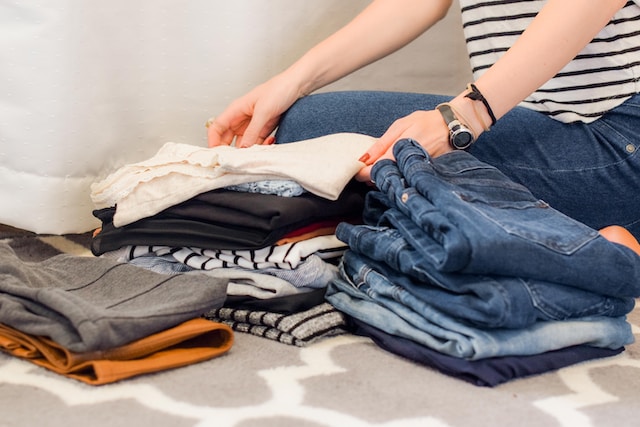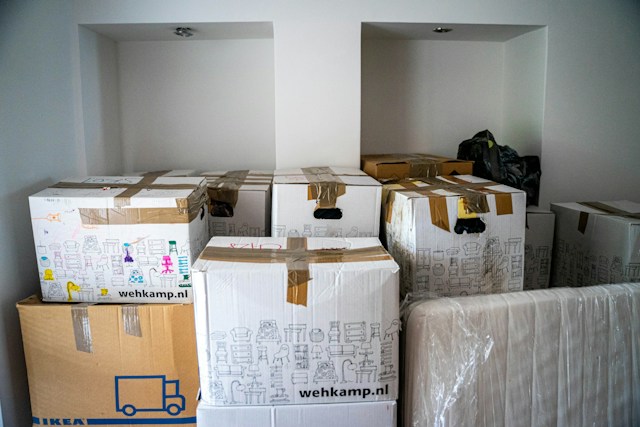 You might feel conflicted between your desire for a clear home and your sentimental wish to hold onto memories of your children’s early years. Who said you have to go all or nothing? It’s perfectly possible to declutter and improve your overall aesthetic while still preserving precious memories.
You might feel conflicted between your desire for a clear home and your sentimental wish to hold onto memories of your children’s early years. Who said you have to go all or nothing? It’s perfectly possible to declutter and improve your overall aesthetic while still preserving precious memories.
You need the right plan of attack and a clear thought process for why and how to tackle the job to avoid falling into the procrastination trap. What’s your motivation? Dig deep and let it inspire you. Then follow this plan to move on and declutter your child’s items, creating a clear home while holding onto select mementos.
The Many Benefits of a Clear Home
Why should you move on and declutter your child’s items, anyway? There are pragmatic reasons, of course:
- Creating more space.
- Readjusting your decor to reflect your current needs — for example, nursery to sewing room.
- Protecting your safety — too much stuff can trip you.
However, those are rarely enough to motivate you to take action, and not because you are lazy. Many people need an extra push.
Consider this — living in a cluttered, untidy home is stressful. Looking at all that stuff is like a never-ending to-do list, feeding the anxiety and depression cycle. Unburden yourself from the psychological weight.
While you want to preserve memories of your babies, you don’t need a constant visual reminder of yesterday. Decluttering and refreshing your decor after your kids leave for college or adult life can be a healing, nurturing way to honor life-cycle changes, helping you look forward to the next chapter instead of dwelling with ghosts.
4 Steps to Decluttering
Now it’s time to get down to the nitty-gritty. What’s your plan of attack? The following four steps don’t necessarily occur in order but are all a crucial part of the process, so review them all before beginning your clear home makeover.
1. Make Several Piles
Decluttering your child’s items is a decision-making game, one made easier by keeping things simple. You can invest in bins for this process or simply make separate piles for items:
- To stay in their current location
- To keep but move or repurpose
- To sell or donate
- To recycle or compost
It’s also helpful to create a fifth pile — your “maybe” pile. It can help you avoid paralysis from the fear of not knowing what to part with and what to keep. Set a reminder on your phone to look back at it in a week or two and move on to the next thing to declutter.

2. Go One Room at a Time
You might feel attached to your child’s teddy bear they loved when they were a toddler. That half-empty bottle of Johnson’s baby shampoo? Not so much. The moral of this example is to declutter your child’s items one room at a time — starting with those containing the least-sentimental pieces.
On a positive note, this approach could mean tackling the worst of the mess first. Few people relish going through their basement, attic or crawlspace — it’s dusty and you might encounter bugs. However, you are probably better equipped to deal with things you don’t see every day than those items that spark nostalgia on sight, so roll up the sleeves of your most stained-up shirt and do the dirty work.
Another plus? By the time you reach your child’s bedroom, you might have a unifying theme for what you hope to keep. For example, you could make a trophy case displaying your child’s sports awards and photographs to grace the wall of your living room.
3. Take Everything Out
Many people only go halfway when organizing, then wonder why their drawers and closets always look slightly cluttered. There is no in-between — take everything out. Imagine you are doing a move-out cleaning and have to get every last bit of dust from the corners, meaning you must do more than shuffle items.
This step shows you exactly what you have to work with space-wise, which can help you decide what to keep and toss. Furthermore, it gives you a clearer picture of your home — you might choose to knock out walls or add cabinets, and a full clean-out shows you the best place to do so. You may even shift your piles to another room while you design a new layout.
4. Invest in Organizers
Once you decide what you want to keep, you need to rearrange your belongings in an aesthetically pleasing way. Start with big decisions — are you going to preserve a full room for your child’s memories? Most people lack sufficient space and decide to instead display their memories throughout their homes with the right organizers.
Shadow boxes and picture walls are only one option. Look to the following home areas for creative storage for your memories:
- Corners: You can hang corner shelves, open up the space beneath your stairs or use a curio cabinet or display case.
- Vertical storage: Including shadow boxes, shelves and basket hangers.
- Hidden-space storage: For example, adding a shelf above walk-in closet doors to use vertical space, building drawers into stair risers and using slide-outs in cabinets and under beds to organize small items.

Where to Take the Items You Declutter
Parting with your decluttered items the right way can ease any discomfort you might feel. One time-tested idea is to donate your hand-me-downs to other family members. You’ll still get to see your child’s beloved items when you visit your favorite niece or nephew.
Another idea is to donate. Some places that may take your belongings and even arrange to pick them up, saving you the trip:
- Thrift and second hand stores
- Churches
- Homeless shelters
- Libraries
- Community centers
- Animal shelters
If you choose to donate somewhere other than a traditional thrift shop, call the organization beforehand. You want to ensure they can use your donation.
What if some items, like your child’s clothing, are too stained or torn to donate? You can compost natural fabrics like cotton, but please read the label. You shouldn’t mix artificial materials, so avoid composting blends or synthetics. However, you can cut them into rags to reduce your paper towel use.
Finally, remember the magic of the high-tech age. You can keep electronic photographs of those items you have no space to keep, even digitalizing cards and pictures your child made into a touching presentation.
Dealing With Your Feelings
In general, the feeling of relief you experience when viewing your new, clear home compensates for any nostalgia generated during decluttering. However, you should honor and validate your feelings about this life transition. How?
Make decluttering a celebration. Consider it preparation for your next stage of life, just as you would prep for the holidays. If you need a little extra TLC during this time, ask for it. Communicate your needs with your partner and maybe schedule a small treat for yourself once you finish the job.
How to Move on and Declutter Your Child’s Items
You want a clear home but haven’t yet decluttered your child’s items. The right mindset and plan of attack get the job done. Follow this guide to move on and declutter your child’s items. Create the clear home you deserve while finding creative ways to preserve your precious memories.
Pictures:
https://unsplash.com/https://unsplash.com/photos/assorted-color-apparels-oa7pqZmmhuA/
https://unsplash.com/photos/brown-cardboard-boxes-on-brown-wooden-table-66NaCdBrkCs
https://unsplash.com/photos/brown-and-white-wooden-cabinet-mi6-Sl4eGY0
Author Bio:
Evelyn Long is a home living writer passionate about providing practical organization and decluttering tips to make keeping a beautiful home that much easier. She is the founder of Renovated, an online home living magazine.
